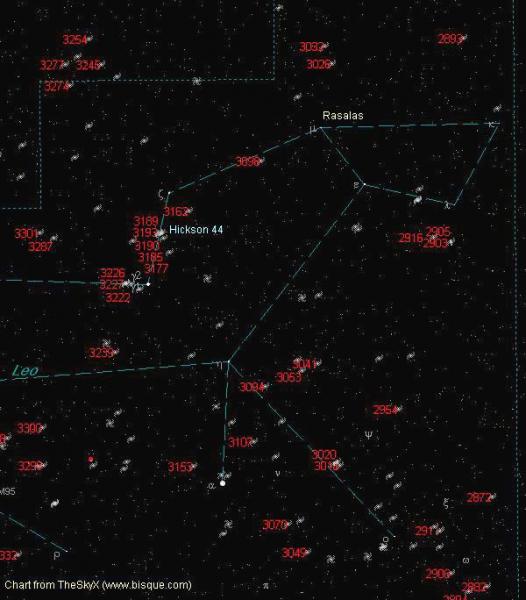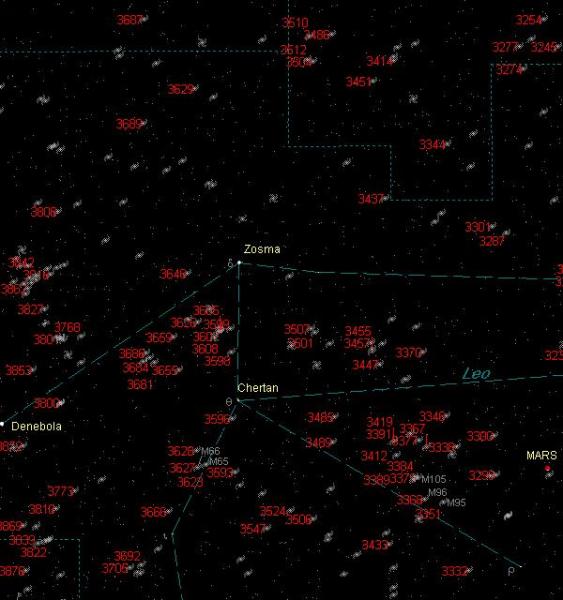Teaching Tools In The Sky
It is comforting to know that some people other than backyard astronomers still take the time to look upon a clear night and ponder many questions. After all, the twinkling sky was nightly entertainment for many early civilizations. But even at this stage of technology where satellite TV with its bazillion channels, smartphones, iPads and the internet, observing those distant points of lights high above is not a thing of the past.
Unless you have had extremely bad luck with two straight months of cloudy nights, you must have noticed the twelve prominent winter stars of Orion the Hunter and company beginning to sink from view. And if that was not enough, the two brightest planets of our solar system only add the proverbial icing to the celestial cake. Venus and Jupiter dancing in the west are what the general public notice at night.
I am sure when someone asks you “what are those bright stars in the sky I see in the early evening?” a grin automatically raises your cheekbones and that feel-good sensation comes over you like a blanket. Once you respond these are indeed planets and not stars, a dialogue now opens for at least a few moments about what we as stargazers and astronomers like about astronomy and how interesting this science/hobby really is.
This is also a great opportunity to capture the starry portrait with a digital camera. If you are shooting only on a tripod, set your camera to ISO 1600 if possible, attach a cable release and head out of the city to the countryside. You would be surprised what a short 13-second exposure on the ‘manual’ setting will capture. Even if you own a small point and shoot, set it on a tripod for a steady surface and set the exposure to the maximum. Then set the timer, press the button and stand back. For further effect, set up the shot with trees, etc in the background if possible.
The beauty of any digital camera is we can change the light sensitivity (ISO) on the fly. Long are the days of having to use up the entire roll of ISO 800 film at night before changing to a slower ISO 100 for a daytime birthday party or family picnic. Remember – pixels are free. Experiment with exposures and settings and just have fun with it. The wider the angles of your shot, the shorter the star trails on the exposure. If you have a motorized scope with a piggyback mount or a tracking platform made just for cameras, the mechanics (when perfectly aligned to north) tracks the sky with resulting pinpoint stars.
Venus is really marching up the sky over the next few weeks. If you have been watching and plotting its path, you have probably noticed Venus is moving straight to the Pleiades M45. Another digital moment will occur on the evenings of April 2nd when the planet is just below the cluster and the 3rd when it appears east. In fact, the 47% lit Venus will appear embedded within the cluster and seem like an eight sister or at least a visiting cousin. Wide-angle telescopes and telephoto lenses will be a must but binoculars are always great. And do not forget the 24th when the 12% waxing crescent moon teams up with Venus some 6 degrees away.
As April moves on, Venus continues to move east against the background stars but is still slipping to the horizon. This means the planet is moving between the Sun and Earth resulting in a larger disk but thinner illumination. It takes on a phase structure just like the moon. Jupiter, on the other hand, continues to trek closer and closer to the western horizon and by month’s end will be a mere 6 degrees from the brilliant Sun.

April is also a wonderful month to be checking out the wealth of galaxies in Leo, Coma Berenices and Virgo. But first the constellation of Cancer the Crab has a few interesting targets to view and even image. First, we stop at the Beehive cluster. Aka M44, the Beehive is wide, close and bright. Although M44 is listed at magnitude 3.1, it is best seen in the countryside where it pops into view with the naked eye with a count of about 40 suns. M44 spans three full moons across and resides 577 light-years from us. Turning a telescope on the Beehive and population rises to a couple of hundred.
Another dense cluster is M67 located eight and a half degrees due south of the Beehive. At five times farther away than M44, this cluster still spans a full moon across or your pinky nail at arm’s length and at an estimated age of four billion years, is one of the oldest clusters. Astronomers estimate 500 stars call the cluster home; it also holds some 200 white dwarfs.
Moving on to Leo the Lion – where do we begin. Pretty well no matter where the scope is pointed, you should pick up a galaxy or two. We will first look at the interaction of two galaxies. Locate Algieba at the base of the Lion’s neck. This cooler K type star lies 125 light-years from us and is listed at magnitude 2.2. From Algieba nudge the scope 50 arc minutes to the east until you stumble over the elongated galaxy NGC 3227. At 77 million light-years away, this magnitude 11.1 island of stars are interacting with the magnitude 12.3 elliptical galaxy NGC 3226.
Start again from Algieba but move north and east for 2.2 degrees. Here we see a group of four dim galaxies catalogued as Hickson 44. At the centre of the 80 million light-year cluster, we have NGC 3190 which is very elongated and has tightly wrapped arms. Above is NGC 3193 with not much detail, to the west is NGC 3187 and possesses a unique structure. Located at the bottom of Hickson 44 is NGC 3185. This galaxy actually has a ring around it.

We now move on to some of my favourite targets such as the trio of the M96 group. M96 is a face-on spiral with tightly wrapped arms but does not portray much structure and is the brightest member of the group. M96 lies an estimated 31 million light-years away and glows at magnitude 9.2. Nudge the scope a little to the west and south some 41 arc minutes to discover M95. This is a face-on barred spiral with tight round arms that almost form a perfect circle, is now in the news. Supernova 2012aw was discovered on March 16, 2012, and at the time of writing this article is still brightening. In a telescope, there is no denying its presence as it looks like a bright star. Astronomers believe the energy released was equal to 500 million suns. Moving the same distance to the east and north of M96 is the elliptical galaxy M105. Elliptical galaxies do not possess any arm structure what so ever and are quite featureless.
Now on the next group called the Leo Trio or M66 group. Once you centre your telescope on the star Chertan – a class A2 star located 178 light-years from us and move two and a half degrees south. M66 is a beautiful stretch of a galaxy with a delicate yet well defined ‘S’ shaped arms especially the bottom arm. M66 lies 35 million light-years away and is listed as magnitude 8.9. M65 a bit to the west is a more traditional spiral like the Andromeda Galaxy in appearance. M65 is the same distance as its neighbour and half a mag fainter. Above those two is NGC 3628. This is a fantastic edge-on galaxy that shows a thick band of gas and dust along its plane but the edges seem to be very distorted. Also, 35 million light-years away and is magnitude 9.5. I will move into Virgo and Coma next month as there are far too many great objects to address in one article.

Leo is also home to the red planet – Mars. Since opposition occurred last month on the third, it is reseeding from Earth. This was not a very good approach because even though Mars and Earth separation was close, it has been the farthest in the past 30 years. Even its disk was a dismal 13.9 arc seconds. When the red planets meet up with us 26 months from now, the show will only get better. It is presently in retrograde motion (moving westerly with the stars) and towards Regulus but ends on the 15th after which it resumes its usual easterly trek through Leo.
As for Saturn, it will be at opposition on the 15th rising at sunset and setting at sunrise. The ring system was edge-on a few years ago has now tilted to a respectable 13.9 degrees with an overall measure of 43 arc seconds or three times that of tiny Mars now. Saturn is yellowish in colour and appears to the upper left of the star Spica.
The full Pink Moon occurs on Good Friday the 6th at 19:19 UT and be aware of high tides the day after at 17:00 UT as the moon will be only 358,314 km from Earth. As a sidebar while on the topic of Easter you are probably wondering why this holiday is so early this year. Easter is calculated as being the Sunday after the full moon after the Spring Equinox. This month’s new moon occurs on the 21st at 3:18 a.m. edst but a real challenge will be some 17 hours later for the east coast and 20 hours on the west to spot the extremely thin sliver after sunset. Extremely clear skies and a good eye are needed for this test. With the moon out of the way, we should have great conditions for observing the Lyrid meteor shower. The peak of only 20 meteors per hour is expected Sunday morning the 21st at 1 a.m. No scope needed for this one. Just head out to dark skies with an open horizon and enjoy the show.
Take the time to enjoy these cool spring nights before those nasty mosquitoes and black flies cut your observing session short.
Until next month, clear skies everyone.
